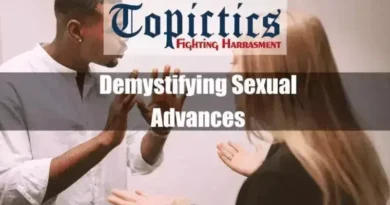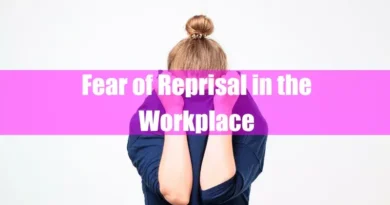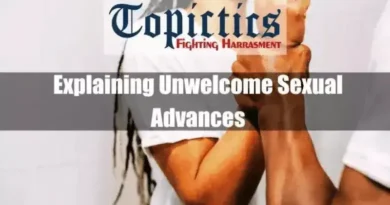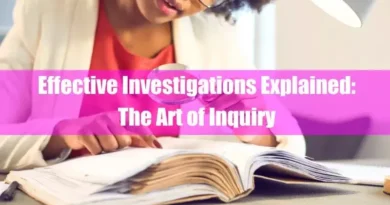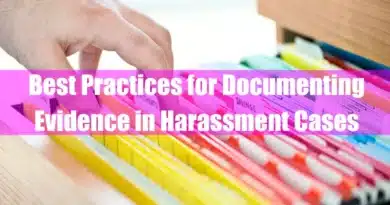I. Defining Power Dynamics
At its core, power dynamics are the intricate web of relationships that determine who has influence and control over whom and how this influence is exerted and experienced. It’s not a static concept but rather a dynamic dance between individuals, groups, and institutions, constantly influencing decision-making, resource allocation, and the very course of events.
Think of it like a complex ecosystem, where different entities occupy various positions and wield varying degrees of influence. These positions can be formal, like a manager having authority over employees, or informal, like a charismatic individual possessing sway over a group. Power can be wielded through explicit means like commands and regulations or subtler tactics like persuasion and manipulation.
II. Exploring Key Concepts:
To fully understand power dynamics, we need to delve into some key concepts:
- Authority: The legitimate right to wield power, often granted by formal positions or social norms. For example, a police officer’s authority to arrest comes from their legal standing.
- Influence: The ability to affect another person’s thoughts, behaviors, or decisions without resorting to direct coercion. A friend’s persuasive advice can influence your career choices.
- Coercion: Using force or threats to compel someone to act against their will. A dictator’s regime might maintain power through fear and intimidation.
- Legitimacy: The perceived rightness or fairness of a power structure. A government elected through a democratic process enjoys greater legitimacy than one imposed through a coup.
- Resistance: The actions taken to challenge or defy established power structures. This can range from individual acts of dissent to organized movements like protests and revolutions.
Far from academic theory, power dynamics influence everything from family meals to global politics. Grasping how power works equips us to navigate relationships, identify societal inequalities, empower ourselves and others, and promote responsible leadership. Understanding power dynamics is not a privilege but a crucial tool for navigating life’s complexities and building a fairer future.
- Explaining Quid Pro Quo Harassment Under Title IX
- Quid Pro Quo Harassment: What It Is? Know Everything
III. Power Dynamics Historical Context
A. From Primordial Power Struggles to Ancient Empires:
The earliest whispers of power can be traced back to the very origins of human civilization. Hunter-gatherer societies, while largely egalitarian, likely saw power concentrated in the hands of skilled hunters, resourceful gatherers, and charismatic leaders. As settlements grew and agriculture flourished, hierarchical structures emerged, with elites wielding control over land, resources, and religious authority.
Ancient empires, from the sprawling pyramids of Egypt to the majestic ziggurats of Mesopotamia, stand as testaments to the concentration of power in the hands of monarchs and priests. The divine right of kings, elaborate bureaucracies, and standing armies served as control instruments, shaping the lives of millions who toiled beneath the shadow of monumental edifices.
B. Shifting Sands of Power in the Classical World:
Yet, history is not a static tapestry. Even within these seemingly rigid structures, seeds of dissent and change were sown. In Greece, city-states like Athens experimented with democracy, giving voice to citizens through direct participation in assemblies and voting. Philosophers like Socrates and Plato grappled with the ethics of power, questioning its legitimacy and advocating for just governance.
Meanwhile, in Rome, the Republic saw a complex interplay of power between the Senate, elected officials, and powerful military leaders. Julius Caesar’s ascent to power, culminating in the establishment of an empire, marked a dramatic shift, demonstrating the vulnerability of seemingly stable structures to the ambition and cunning of individuals.
C. The Medieval Tapestry: From Feudalism to Divine Authority:
The fall of the Roman Empire ushered in an era of fragmentation and feudalism. Power resided in the hands of landed nobles, who controlled vast swathes of territory and commanded the loyalty of peasant laborers. The Church, wielding the spiritual and intellectual authority of Christianity, emerged as a powerful force, shaping social norms and influencing political decisions.
However, this era was not devoid of challenges to established power structures. Peasant revolts, fueled by economic hardship and the desire for equity, erupted throughout Europe. Intellectual movements, like the rise of universities and the questioning of papal authority, laid the groundwork for future transformations.
D. The Dawn of Modernity: Shifting Paradigms and Redefining Power:
The Renaissance and Enlightenment marked a pivotal turning point in the history of power. Questioning divine rights, the rise of secular thought, and the emphasis on individual rights and liberties fundamentally challenged existing power structures. The American and French Revolutions, fuelled by these ideals, laid the groundwork for modern democracies, where popular sovereignty replaced the whims of monarchs and emperors.
However, these revolutions did not bring about universal equality. Slavery, colonialism, and economic disparities continued to cast long shadows. The 20th century witnessed new struggles for power, from the dismantling of colonial empires to the fight for civil rights and women’s suffrage.
E. The Contemporary Landscape: A Shifting Terrain:
Today, we find ourselves in a world where power dynamics continue to evolve under the influence of globalization, technological advancements, and demographic shifts. While traditional hierarchies haven’t entirely vanished, new power players have emerged, from multinational corporations and media giants to social media influencers and activist movements.
Understanding the historical trajectory of power is crucial to comprehending the complexities of the present. From the ancient pyramids to the digital landscapes of today, the struggle for control and influence has shaped the course of human civilization. In the subsequent sections, we’ll delve deeper into the diverse forms of power, explore its manifestations in various contexts, and ponder the consequences and potential solutions for navigating this intricate dance of dominance and resistance.
Demystifying Harassment and 16 Types of Harassment
IV. Demystifying Power: Exploring its Diverse Forms
Power is a chameleon, its true essence often veiled beneath various guises. We’ll peel back the layers and dissect the different types of power that sculpt our lives and shape our interactions. Buckle up as we embark on a journey through the multifaceted landscape of power dynamics!
A. Formal Power:
Formal power occupies the center stage, readily visible in hierarchical structures like corporations, governments, and educational institutions. It’s the power vested in designated positions, embodied by titles like CEO, president, or professor. This type of power grants individuals the authority to make decisions, allocate resources, and enforce rules.
Formal power can be legitimate and beneficial, ensuring order and facilitating efficient task completion. However, it can also lead to abuse, particularly when unchecked or concentrated in the hands of a few. History is riddled with examples of authoritarian regimes where formal power morphed into oppression and suppression.
B. Informal Power:
But power doesn’t always wear a name tag. Informal power thrives in the shadows, wielding influence through charisma, expertise, or strategic networks. A seasoned sales representative might sway clients with their charm. At the same time, a tech-savvy colleague’s advice carries undue weight due to their knowledge.
Informal power can be highly effective, fostering collaboration and promoting innovation. It can also create invisible hierarchies, where individuals without formal authority exert significant influence based on their personal qualities or social connections. This can sometimes lead to unfair advantages and hinder equal opportunities.
C. Interpersonal Power:
Power dynamics exist in a constant ebb and flow in the intimate realm of personal relationships. Partners, friends, and family members navigate a complex dance of influence, negotiation, and compromise. Factors like emotional dependence, communication styles, and shared history all contribute to the power dynamics within these bonds.
Balanced power in relationships fosters empathy, mutual respect, and healthy communication. However, imbalances can lead to unhealthy patterns, from emotional manipulation to controlling behavior. Recognizing and addressing power dynamics within relationships is crucial for fostering well-being and establishing healthy boundaries.
D. Structural Power:
Beyond individual interactions, power operates at a systemic level embedded within the very fabric of our societies. Structural power refers to the ingrained inequalities woven into social structures based on factors like gender, race, class, and sexual orientation. These invisible forces shape access to resources, opportunities, and even basic rights.
The consequences of structural power imbalances are vast and far-reaching. Systemic discrimination, marginalization, and exploitation all stem from ingrained power structures that favor certain groups over others. Understanding and challenging these injustices is crucial for fostering a more equitable and just society.
E. Symbolic Power:
Beyond the tangible, power thrives in the realm of symbols and narratives. Symbolic power refers to the ability to shape meanings, perceptions, and identities through cultural representations, media narratives, and dominant ideologies. Think of it as the power to control the stories we tell and the images we see, thereby influencing how we understand ourselves and the world around us.
Symbolic power can reinforce existing power structures, perpetuating stereotypes and marginalizing voices. However, it can also be a powerful tool for social change, allowing marginalized groups to reclaim their narratives and challenge dominant ideologies.
V. Power on the Stage: Examining Dynamics in Action

Now that we’ve unpacked the various types of power let’s witness them play out in real-world scenarios. This section will be a vibrant tapestry of case studies, showcasing how power dynamics manifest and collide across diverse settings. Prepare to see the invisible hand of power shape decisions, ignite conflicts, and fuel movements for change.
A. Hypothetical Example 1: The Corporate Ladder – Formal Power and its Pitfalls:
Imagine a bustling tech startup. The CEO, a charismatic entrepreneur with a vision, retains formal power. He makes decisive decisions, allocates resources, and demands results. His influence is undeniable, driving the company’s growth and attracting investors. Yet, whispers of discontent begin to surface. Employees feel micromanaged, and their innovative ideas ignored. The CEO’s unchecked power, initially praised for its efficiency, now breeds resentment and stifles creativity.
This case highlights the potential pitfalls of unchecked formal power. While it can be crucial for achieving goals, overreliance on top-down decision-making can stifle collaboration, creativity, and employee well-being. Finding a balance between formal authority and empowered teams is key to sustainable success.
B. Hypothetical Example 2: The Classroom Crucible – Interpersonal Power and the Shaping of Minds:
Step into a bustling classroom. A veteran teacher with years of experience and a knack for storytelling captivates the students. Her informal power, built on expertise and charisma, fuels their engagement and ignites their curiosity. However, in the back corner sits a shy student, hesitant to participate. The teacher unintentionally focuses on vocal students, reinforcing an invisible power dynamic.
This case study reveals the subtle nuances of interpersonal power within group settings. While positive influence can spark learning and engagement, neglecting diverse voices and perspectives can marginalize certain individuals. Recognizing and addressing these dynamics is crucial for creating inclusive learning environments where students feel empowered to participate.
C. Hypothetical Example 3: The Activist’s Arena – Challenging Structural Power and Collective Action:
Picture a bustling city street filled with protestors chanting for environmental justice. A diverse group of individuals, united by a common cause, stands against the powerful interests of a polluting corporation. Their formal power may be limited, but they wield the collective strength of solidarity fueled by the injustices of structural power. They raise awareness and garner support through the strategic use of symbolic power, like impactful messages and creative tactics.
This case study showcases the power of collective action in challenging entrenched power structures. While individuals may be powerless alone, when they unite under a shared cause, their informal power can snowball into formidable resistance movements. The fight for social justice often involves mobilizing people’s power and creatively challenging dominant narratives.
D. Hypothetical Example 4: The Newsroom Battlefield – Media and the Shaping of Narratives:
Immerse yourself in the fast-paced world of a newsroom. A veteran journalist with investigative skills and access to powerful sources unearths a political scandal. His formal power as an established reporter grants him a platform, but navigating the web of media ownership and political pressure becomes a struggle for control over the narrative.
This case study highlights the intricate dance between formal power, symbolic power, and structural forces within the media landscape. While journalists strive for ethical reporting and truth-seeking, they navigate a minefield of competing interests and agendas. Recognizing the influence of powerful stakeholders and critically evaluating media narratives is crucial for informed citizenship.
- Workplace Quid Pro Quo Harassment: An Ultimate Guide.
- Educational Quid Pro Quo Harassment: An Ultimate Guide.
VI. Power’s Echo: Consequences and Quests for Equity
Like a ripple in a pond, power sends waves that touch every corner of our lives. Now, we’ll examine the often-unseen consequences of power imbalances and explore the ongoing quests for a society where power dynamics are more equitable and just.
A. The Shadows of Inequality:
The first tremor of power imbalance resonates in the form of inequality. Structural power imbalances perpetuate disparities in access to resources, opportunities, and basic rights. Gender pay gaps, racial discrimination, and limited access to education for marginalized communities are just a few stark examples of how power structures shape life outcomes.
These inequalities breed social unrest, fuel conflict, and hinder collective progress. They chip away at social cohesion and erode trust in institutions. Recognizing and addressing these imbalances is crucial for building a more inclusive and just society.
B. Empowerment:
But amidst the shadows of inequality, rays of hope flicker through the efforts of individuals and communities striving for empowerment. This involves equipping individuals and groups with the tools and resources they need to challenge oppressive power structures and advocate for their rights.
Empowerment takes many forms, from grassroots movements advocating for social justice to educational initiatives to closing knowledge gaps. It’s about fostering critical thinking, providing access to information and resources, and building solidarity among marginalized groups.
C. Reconstructing Power Dynamics:
The quest for a more equitable future necessitates individual empowerment and a reconstruction of power dynamics themselves. This involves rethinking traditional hierarchies, decentralizing decision-making, and amplifying marginalized voices.
Examples include participatory budgeting initiatives, where communities allocate resources directly, or collaborative leadership models prioritizing shared decision-making. These transformations are not without challenges, but they offer a glimpse into a future where power is not wielded by the few but distributed more evenly across the social landscape.
D. Navigating the Digital Era:
The rise of the digital age has further complicated power dynamics, introducing new actors like tech giants and social media platforms that wield immense influence over information, communication, and even identity formation.
Understanding how power operates in the virtual realm is crucial for critically navigating online spaces, challenging algorithmic biases, and protecting individual privacy. It also necessitates holding digital power structures accountable and advocating for responsible use of technology.
The journey towards a more equitable future is ongoing, requiring continuous effort and collective action. By understanding the multifaceted nature of power, acknowledging its potential pitfalls, and empowering individuals and communities, we can begin to reshape power dynamics and build a society where everyone has the opportunity to thrive.
VII. Conclusion: Unveiling Pathways Towards Empowered Futures
We’ve reached the final leg of our journey through the intricate landscape of power dynamics. Here, we’ll tie up loose ends, offer actionable solutions, and leave you with resources to ignite your own journey toward a more empowered future.
A. Recap: A Tapestry of Insights:
This comprehensive exploration has shed light on the multifaceted nature of power: its various forms, from formal authority to subtle influence, its diverse manifestations in different contexts, and its profound impact on our lives. We’ve observed how power imbalances lead to inequality and marginalization, explored the ongoing quests for equity, and examined the challenges and opportunities presented by the digital age.
B. Solutions for Navigating Power Dynamics:
As we move forward, it’s crucial to translate these insights into practical actions. Here are some key solutions to consider:
1. Individual Level:
- Develop critical awareness: Learn to recognize power dynamics in everyday interactions, media narratives, and social structures. Question the status quo and challenge ingrained biases.
- Sharpen your own power: Invest in your skills, knowledge, and self-confidence. Develop effective communication and negotiation skills to assert your needs and advocate for yourself and others.
- Build solidarity: Seek out communities and allies who share your values and goals. Collective action amplifies individual voices and increases the effectiveness of resistance movements.
2. Societal Level:
- Advocate for systemic change: Support policies and initiatives that address structural inequalities like racial and gender disparities, economic injustice, and limited access to education and healthcare.
- Hold institutions accountable: Scrutinize the actions of governmental bodies, corporations, and media platforms. Demand transparency and ethical use of power.
- Foster inclusive participation: Promote diverse voices and perspectives in decision-making processes. Create platforms for marginalized communities to be heard and their needs addressed.
3. Digital Landscape:
- Practice digital literacy: Develop critical thinking skills to navigate the online world. Be aware of algorithmic biases and understand how information is curated and controlled.
- Support responsible technology development: Advocate for ethical uses of artificial intelligence and data collection. Demand transparency and accountability from tech giants and social media platforms.
- Empower online communities: Create safe spaces for diverse voices to flourish online. Counter hate speech and misinformation with credible information and constructive dialogue.
Remember: Change doesn’t happen overnight. It’s a continuous process fueled by awareness, action, and collaboration. The solutions outlined above are just the starting point; your unique skills, perspectives, and actions can contribute immensely to building a more empowered future.




